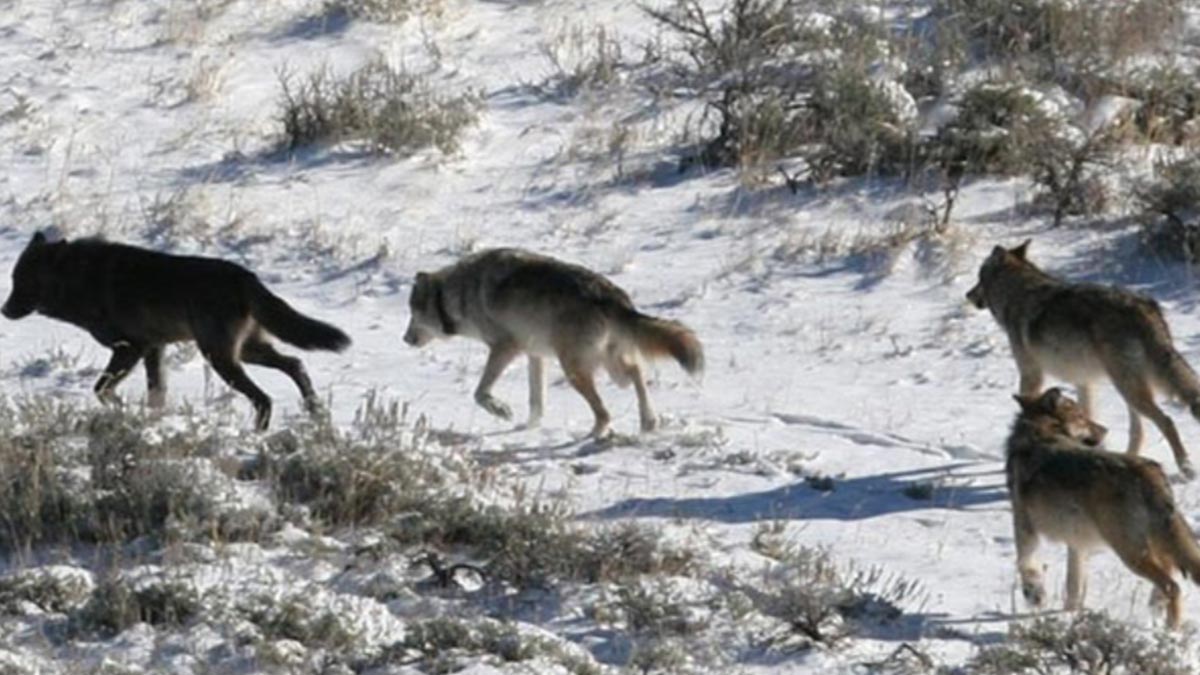Below is an op-ed published in the Missoulian newspaper, in response to an article by an advocate claiming wolves have the ability to slow or stop the spread of chronic wasting disease.
A recent guest column submitted by Marc Cooke (1/23), president of the environmental group Wolves of the Rockies, questioned why a Montana Environmental Quality Council discussion about chronic wasting disease ignored the “fact” that wolves may “sanitize the landscape” by “controlling the spread of CWD.”
The answer is quite simple. Cooke is beating the same drum that environmentalists continue to beat by making false claims and elevating the wolf’s status above scientific reality in order to further their agenda. The bottom line is there are zero scientific findings that show wolves stop or even limit the spread of CWD. However, science coupled with what is happening on the Montana landscape right now shows the exact opposite may be true.
It was during the spring of 2019 that CWD first reared its ugly head in and around Libby. Montana Fish, Wildlife and Parks’ (FWP) data shows approximately 30 to 35 wolf packs roam within 50 miles of town. By July 2019, samples from five whitetail deer tested positive for CWD, despite the nearby presence of wolves. As of January 17, 2020, FWP confirmed 61 whitetail deer, two moose and one mule deer tested positive for CWD in what is now termed the Libby CWD Management Zone. Wolves are not sanitizing the landscape. The disease continues to spread.
Let’s talk science. In 2015, researchers from the National Wildlife Research Center, U.S. Department of Agriculture, Animal and Plant Health Inspection Service, Wildlife Services; Colorado State University’s College of Veterinary Medicine; Department of Microbiology, Immunology and Pathology at Colorado State University’s Prion Research Center and the National Prion Disease Pathology Surveillance Center at Case Western Reserve University tackled the issue head-on.
They found that CWD prions, mutant proteins that trigger abnormal folding in the brain, remain infectious and are actually distributed by canids (coyotes in this specific research) after they ingest infected ungulates, defecate or leave their saliva behind as they move across the landscape. Their research shows that it takes at least three days for CWD-infected brain material to pass entirely through the gastrointestinal tract of coyotes.
Coyotes cover wide swaths of land, sometimes 60 to 100 miles a day so individuals carrying CWD can exacerbate its spread. Wolves, as we all know, are the largest members of the canid family. According to the International Wolf Center, they can travel up to 50 miles or more in one day in search of prey. So coyotes and most likely wolves as well, their canid “big brother,” do not contain, but may actually spread the disease.
Lastly, David Mech, considered the world’s foremost respected wolf researcher and expert, has warned against sanctifying the wolf. He stated any claims that wolves slow the spread of CWD are merely speculation.
Mr. Cooke, repeatedly saying something over and over does not make it true.
Blake Henning
Chief Conservation Officer
Rocky Mountain Elk Foundation
B.S. Wildlife Management & Agriculture – University of Nebraska-Lincoln
M.S. Wildlife Biology – Kansas State University
(Photo source: Montana Fish, Wildlife and Parks)
